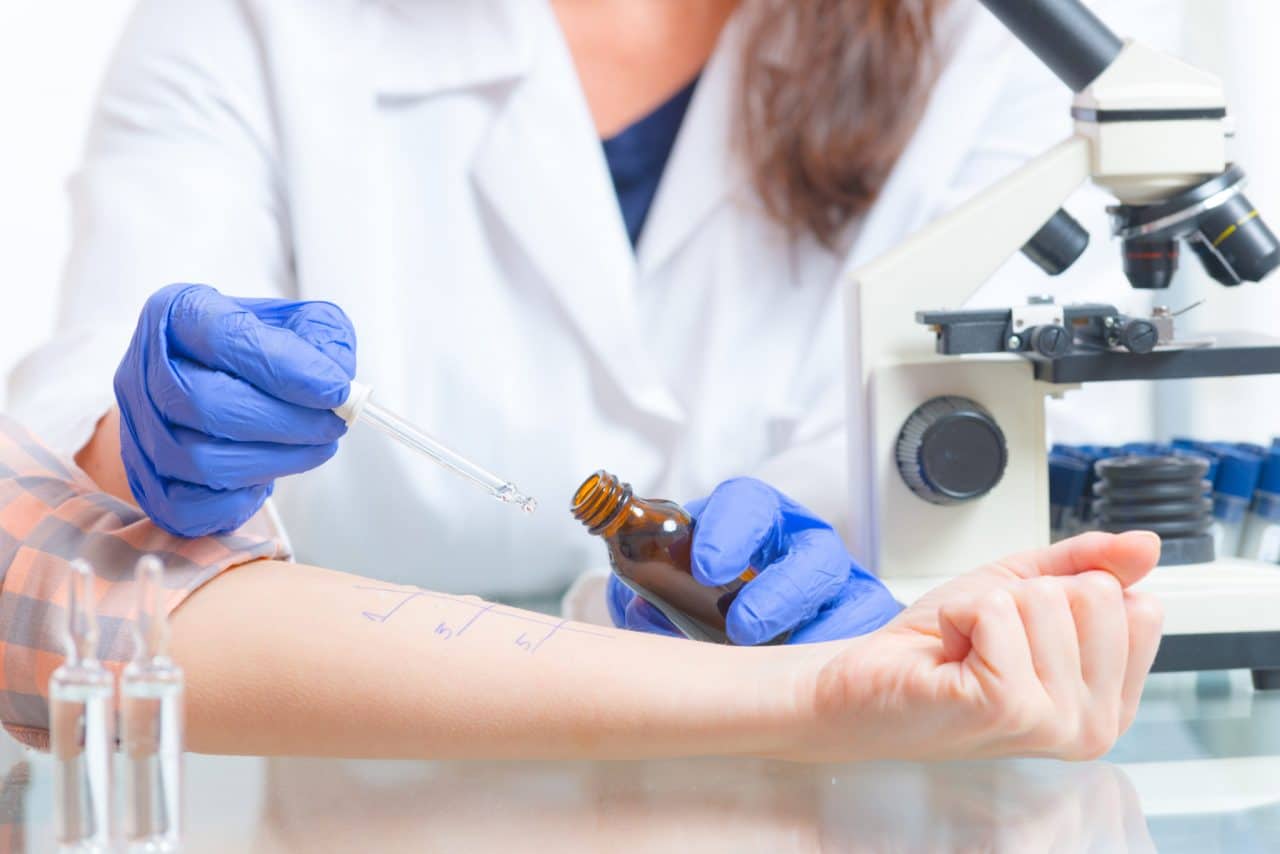The only way to treat your allergy symptoms is to determine their exact cause; this is accomplished through a series of allergy tests.
Skin Prick Testing
Skin tests are the preferred allergy test because they are safe, the cost is affordable and they offer the most accurate results.
How Does a Skin Test Procedure Work?
In prick testing, several drops of a solution containing the suspected allergen are placed on the surface of the skin, usually the forearm or back, and allowed to penetrate. A needle is used to prick or scratch the skin where the drops are placed.
If your body is allergic to this substance, the body will release histamine in response to the test. The result is swelling and redness on the skin.
How Fast Are the Results of a Skin Prick Test?

The procedure is performed in-office and should take no longer than 20 to 40 minutes. Skin prick test results are available before you leave the doctor’s office. That’s because skin prick tests are visual, and an allergist can tell whether or not you are allergic to an allergen based on how your body responds to it.
Prick testing is safe and reliable. Other than a little discomfort, swelling or itching, there are no side effects to worry about. It is most often used to test for allergies to pollen, mold, dust mites, pet dander and food.
Skin Prick Test vs Patch Test
A patch test is more often used to identify allergens that cause skin rashes. Patch tests typically take several days to process and function differently. Where a skin prick test introduces a tiny amount of an allergen into the skin, a patch test holds a liquid containing the allergen on top of the skin using a specialized patch. After 48 hours the patient can return to the allergist who will then mark the test sites and a third appointment may occur another 48 hours later before final results can be determined.
Intradermal Test
An intradermal test is used when a skin prick test does not produce an allergic reaction. An intradermal wheal, or bleb, is injected directly under the top layer of skin. After 15 minutes any reactions are measured and classified as either positive or negative.
Blood Testing for Allergies
A blood test measures how much of an allergen-specific antibody, called immunoglobulin E (IgE), is in your blood. The more allergen-specific IgE in your blood, the more likely you are to be allergic.
The most common blood test is a radioallergosorbent (RAST) test. It screens for common allergy triggers such as pollen, mold, dust mites and pet dander. RAST is the preferred testing method for infants and children. It is less expensive and results take longer since an outside lab is involved.
Blood tests are typically used to confirm the results of a skin test; they may also be used instead of skin tests if a serious allergy makes skin testing unsafe.
When is blood testing preferred over skin testing?
Some medications and conditions make blood testing preferable because blood testing doesn’t expose a patient to allergens. Medicines on that list include antihistamines, steroids, beta-blockers and antidepressants. People with life-threatening allergies, skin conditions, asthma or heart conditions may all be better candidates for a blood test.
Pulmonary Function Tests
Pulmonary function tests are used to determine how well your lungs are working. They are typically completed in addition to allergy tests. The three main tests are spirometry, plethysmography and diffusion capacity. Spirometry measures the amount of air you breathe in and out by breathing into a machine. Plethysmography measures your lung volume, or the amount of gas in your lungs by having you stand in a small booth and breathe into a mouthpiece. The diffusion capacity test evaluates how well the small air sacks within your lungs work by having you breathe in certain gases and breathing out into a machine.
Call Carolina Pines ENT at (803) 630-5353 for more information or to schedule an appointment.
